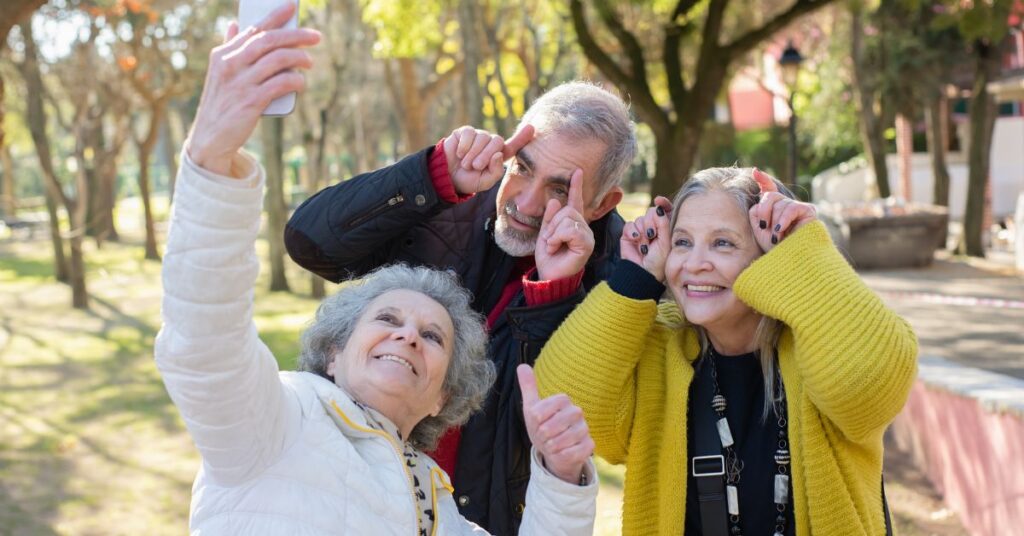Something beautiful happens when autumn arrives in retirement communities in Chattanooga, TN. The air shifts, leaves begin their colorful dance and residents find themselves naturally drawn to the gentle rhythms of change. You’ve probably felt that quiet invitation to pause and breathe a little deeper when the seasons turn. This feeling isn’t just nostalgia. As the fall season approaches, it’s the perfect time to reflect and practice mindfulness. Summer’s busy energy gives way to autumn’s thoughtful pace, allowing you to reconnect with yourself and the world around you.
Fall mindfulness activities become more than just pleasant pastimes; they become pathways to peace within the supportive community of independent living or senior living in Chattanooga.
Understanding Nature’s Rhythms
Nature doesn’t rush. It flows from one season to the next with a patience that many of us have forgotten how to embrace. At retirement communities in Chattanooga, TN, residents discover what happens when they slow down enough to witness these shifts firsthand through seasonal programming that connects them to nature’s patterns. This connection runs deeper than simple beauty—it touches something fundamental in our mental and emotional wellbeing.
Why seasonal changes affect our emotions
Your body holds ancient wisdom about seasonal shifts. When daylight hours shorten in fall, your system naturally produces more melatonin, which affects your energy levels and sometimes your mood. This biological response explains why many people feel more reflective or even melancholy as summer transitions to autumn—it’s not weakness, it’s design.
How mindfulness aligns with nature
Watch how nature moves through its seasons; you’ll see mindfulness in action. Both share the same fundamental principles:
- Embrace impermanence: Just as leaves change and fall, mindfulness teaches that all experiences, thoughts and feelings are temporary
- Notice without judgment: Nature doesn’t label weather patterns as “good” or “bad,” and mindfulness encourages the same neutral observation of your inner landscape
- Honor natural cycles: Both nature and mindfulness recognize that rest, growth, abundance and release all have their necessary place
Four Mindfulness Practices for Seasonal Transitions
Change feels more manageable when you have specific mindfulness practices to guide you through it. Retirement communities in Chattanooga, TN, recognize this truth, offering programs that help residents connect meaningfully with nature’s transitions.
1. Nature walks with intention
When you consciously engage with a regular walk, it transforms into a profound experience. Mindful nature walks help you truly notice the colors, textures, scents, and sounds of your surroundings. Autumn offers vibrant sensory experiences: leaves crunching underfoot, the sharp clarity of cool air, and the earthy smell of decomposing foliage.
Here’s a simple approach: Pick a familiar path and walk it weekly throughout the season. Watch how it changes.
2. Breathwork for grounding
Your breath anchors you to this moment, especially when seasonal change causes emotions to feel unsettled. This grounding technique stabilizes both your energy and your mood.
The practice: Sit comfortably. Breathe in for five counts, pause, then exhale for seven counts. Picture yourself as a tree—roots reaching deep for stability, branches swaying with the seasonal winds but never breaking.
3. Creating seasonal rituals
Rituals give meaning to transitions. They help you feel active in the change process rather than swept along. Your autumn ritual might include:
- Arranging seasonal items in your living space
- Setting intentions for the coming months
- Preparing foods that are warm and comforting
4. Practicing gratitude for the past season
Before welcoming what’s next, take time to honor what has been. Gratitude creates emotional closure while acknowledging life’s continuous flow. Start small: Write down five specific summer experiences that brought you joy. This practice helps you release the past season with appreciation while opening your heart to autumn’s gifts—a principle that senior living communities celebrate as part of embracing life’s chapters with grace.
Mindfulness in Retirement Communities
Mindfulness has quietly become a cornerstone of wellness programs in Chattanooga’s retirement communities, offering residents practical tools for navigating seasonal transitions.
These communities understand that mindful practices help seniors reduce stress, improve mental clarity and develop greater resilience throughout the year.
Other fall-specific activities include:
- Pumpkin carving and decorating, which stimulates both creativity and fine motor skills
- Mindful nature walks to observe falling leaves and seasonal changes
- Gratitude practices focused on the abundance of the harvest season

How Red Stone Estates supports seasonal wellness
Red Stone States in Chattanooga offers residents holistic approaches designed to enhance well-being through every season. The community encourages participation in guided wellness exercises and social events that foster connections, all crucial elements for mental health as seasons shift. Specialized communities offer structured support for seasonal transitions that you find valuable. To experience firsthand how mindfulness practices are integrated into community living, consider touring the Red Stone Estates community by calling (423) 541-9300.
FAQs
Q1. How can mindfulness help with seasonal transitions?
Mindfulness practices can ease the transition between seasons by helping you slow down, embrace your surroundings and align with nature’s rhythm. These techniques allow you to observe changes without judgment, fostering a sense of peace and acceptance as the environment shifts.
Q2. Why do seasonal changes affect our emotions?
Seasonal changes impact our emotions due to biological responses to altered daylight hours, temperature shifts and sensory experiences that trigger memories and associations. Our bodies and minds are naturally attuned to these environmental changes, influencing our mood and energy levels.
Q3. Can mindfulness help with the melancholy some people feel in autumn?
Yes, mindfulness can help manage autumn melancholy by encouraging acceptance of natural emotional shifts, fostering gratitude for the season’s unique qualities and providing techniques to stay grounded in the present moment rather than dwelling on negative feelings.




